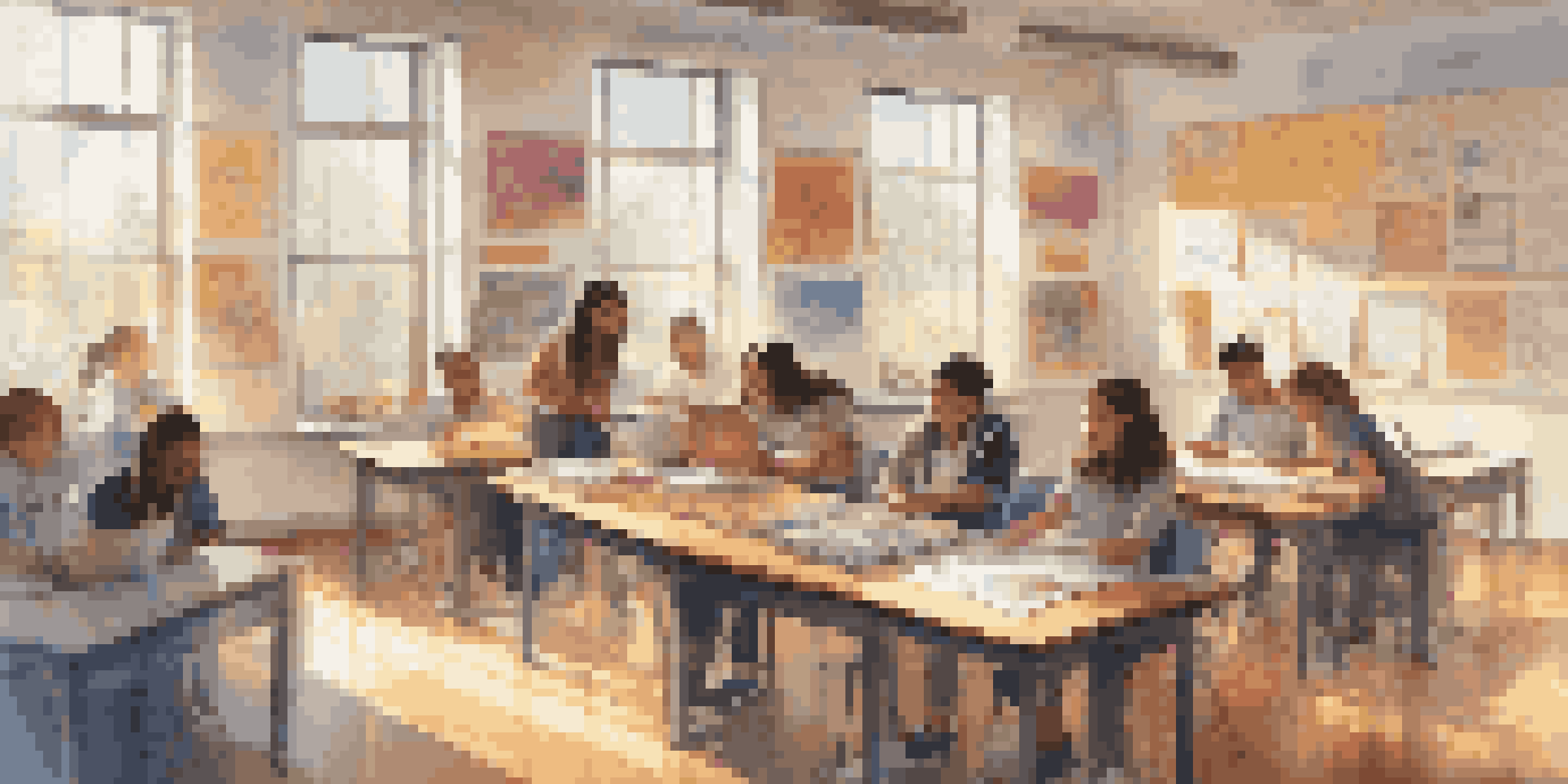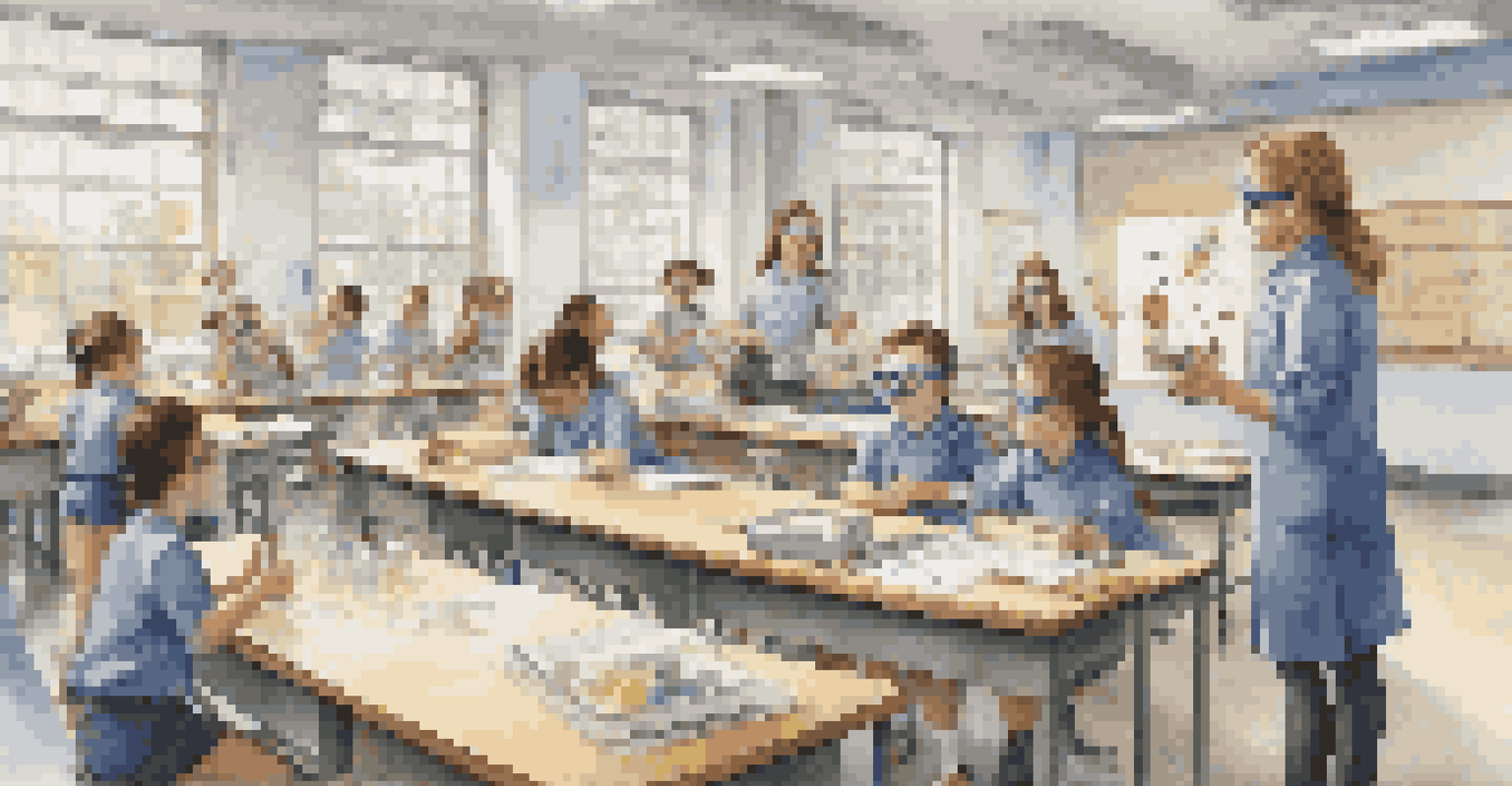Flipped Classroom: Strategies for Enhancing Student Motivation

Understanding the Flipped Classroom Model
The flipped classroom is an innovative teaching approach where traditional learning roles are reversed. Instead of introducing new content during class time, students engage with instructional materials at home, often through videos or readings. This allows class time to be dedicated to deeper discussions, collaborative projects, and hands-on activities, promoting a more interactive learning environment.
The only thing worse than training your employees and having them leave is not training them and having them stay.
By moving direct instruction outside the classroom, educators can foster a culture of active learning. Students come to class prepared with foundational knowledge, enabling teachers to focus on clarifying concepts and facilitating discussions. This model not only enhances understanding but also encourages students to take charge of their education, leading to increased motivation.
Ultimately, the flipped classroom empowers students to learn at their own pace. Those who grasp concepts quickly can move ahead, while others can revisit materials as needed. This flexibility is particularly beneficial for diverse learners, making the flipped classroom an inclusive strategy for enhancing student motivation.
Creating Engaging Pre-Class Content
To kick off a successful flipped classroom, it’s crucial to develop engaging pre-class content. Educators can leverage various formats such as video lectures, podcasts, or interactive quizzes to keep students interested. The goal is to present material in a way that resonates with students, making them eager to learn before they even step foot in the classroom.

Using storytelling or real-world examples can significantly enhance the relatability of the content. For instance, a math teacher might illustrate a concept through a story about budgeting for a vacation, making abstract ideas more concrete. When students see the relevance of what they’re learning, their intrinsic motivation to engage with the material increases.
Flipped Classroom Enhances Engagement
By reversing traditional learning roles, students prepare at home, allowing for more interactive and collaborative activities in class.
Additionally, integrating technology can further enrich the learning experience. Tools like educational apps or discussion forums provide students with multiple avenues to explore content at their own pace. Such diverse resources not only cater to varying learning styles but also foster a sense of autonomy, which is vital for maintaining motivation.
Designing Interactive In-Class Activities
Once students have engaged with pre-class materials, the classroom becomes a space for interaction and application. Designing activities that promote collaboration, such as group projects or peer teaching, can significantly enhance motivation. These interactive elements allow students to take an active role in their learning, transforming passive consumption into dynamic engagement.
Tell me and I forget. Teach me and I remember. Involve me and I learn.
For instance, a science teacher might facilitate a hands-on experiment in class where students apply the concepts they learned at home. This not only solidifies their understanding but also encourages teamwork, as students learn from one another's perspectives. When students feel like contributors rather than mere recipients, their investment in the learning process deepens.
Moreover, incorporating technology during class time can further elevate the experience. Tools like interactive whiteboards or polling apps can create a lively atmosphere, allowing students to share ideas and feedback instantly. Such engaging practices not only enhance understanding but also help maintain a high energy level in the classroom, which is essential for sustaining motivation.
Fostering a Supportive Learning Environment
A supportive learning environment is crucial for maximizing student motivation in a flipped classroom. Building a community where students feel safe to express their thoughts and questions encourages them to be active participants. This can be achieved through establishing clear norms and fostering respectful communication among students.
Teachers play a key role in creating this positive atmosphere. By being approachable and showing genuine interest in students' progress, educators can cultivate trust. For example, regularly checking in on students' understanding and providing constructive feedback helps them feel valued, which can significantly boost motivation.
Supporting Student Autonomy Boosts Motivation
Encouraging students to make choices in their learning fosters ownership and enhances their intrinsic motivation.
Additionally, celebrating small achievements can further enhance this supportive culture. Recognizing students’ efforts, whether through shout-outs or showcasing their work, reinforces their sense of accomplishment. When students see that their hard work is acknowledged, it inspires them to continue engaging with the material and striving for success.
Encouraging Student Autonomy and Ownership
One of the most effective strategies to enhance motivation in a flipped classroom is to encourage student autonomy. When students have a say in their learning choices—such as selecting topics for projects or deciding the pace of their study—they feel a greater sense of ownership over their education. This empowerment can significantly boost their intrinsic motivation.
For instance, allowing students to create their own learning goals or personal projects can lead to increased engagement. A history teacher might let students choose a historical figure to research, fostering a sense of personal investment in the outcome. Such autonomy not only enhances motivation but also helps students develop critical thinking and decision-making skills.
Moreover, providing opportunities for self-assessment can further deepen this sense of ownership. Encouraging students to reflect on their learning processes and outcomes fosters a growth mindset. When students recognize their progress and areas for improvement, they are more likely to stay motivated and committed to their learning journey.
Utilizing Feedback to Drive Motivation
Feedback is a powerful tool for enhancing student motivation in a flipped classroom. Timely and constructive feedback helps students understand their strengths and areas for growth, which can motivate them to improve. Rather than viewing feedback as criticism, students should be encouraged to see it as a roadmap for their learning journey.
For example, after a group project, teachers can provide specific, actionable feedback that highlights what worked well and what could be improved. This not only validates students’ efforts but also guides them toward better performance in future tasks. When feedback is framed positively, it can inspire students to take risks and try new approaches.
Feedback Drives Continuous Improvement
Timely and constructive feedback helps students recognize their strengths and areas for growth, motivating them to improve.
Additionally, fostering a culture of peer feedback can increase motivation. Allowing students to give and receive feedback from their peers encourages collaboration and reinforces learning. This sense of community and shared responsibility for each other’s success can create a more engaged and motivated classroom environment.
Celebrating Success and Progress
Celebrating student success and progress is vital for maintaining motivation in a flipped classroom. Recognizing achievements, both big and small, fosters a positive learning atmosphere and encourages students to continue striving for excellence. Celebrations can take many forms, from verbal praise to showcasing student work in class or on social media.
For instance, a teacher might create a 'wall of fame' where students' projects are displayed. This not only boosts the confidence of those featured but also inspires their peers to aspire to similar recognition. When students see their classmates celebrated, it can ignite a healthy competitive spirit and motivate them to put forth their best efforts.

Moreover, reflecting on progress during class discussions can reinforce a sense of accomplishment. Encouraging students to share their learning journeys and milestones allows them to recognize how far they’ve come. This reflection not only enhances motivation but also instills a sense of pride in their hard work, making them more likely to stay engaged in future learning.